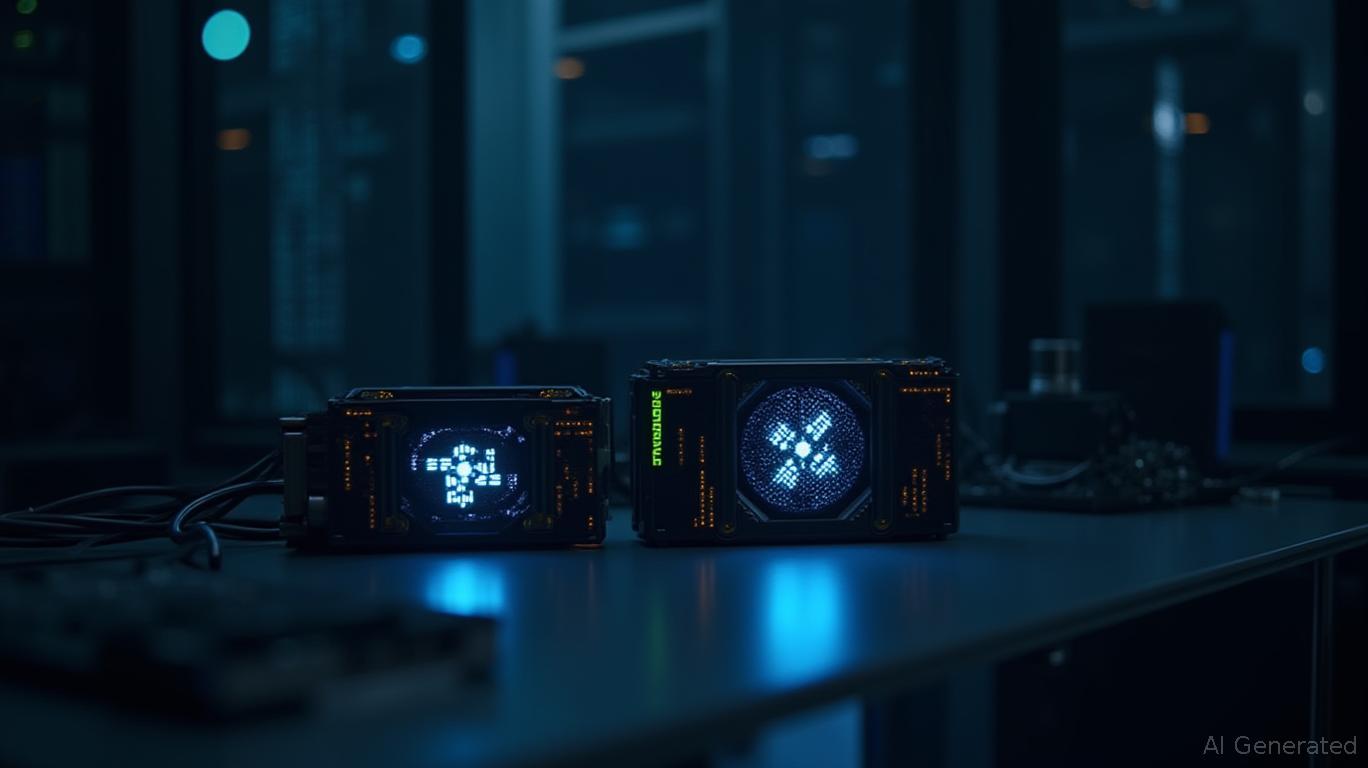NVIDIA's AI Infrastructure Play: Why Data Centers Are the New Gold Rush
The race to dominate AI infrastructure has crystallized into a clear hierarchy, with NVIDIA firmly at the top. As global tech giants like Microsoft, Google, and Meta pour billions into building AI-driven data centers, NVIDIA's GPUs have emerged as the indispensable engines powering this transformation. Recent analysis from Bernstein Research underscores the scale of this opportunity—and the risks of falling behind.
The Data Center Gold Rush: NVIDIA's $30 Billion Runway
Bernstein's latest report reveals NVIDIA's data center revenue has surged to $30 billion annually by 2025, tripling its 2023 tally of $12.3 billion. This growth is fueled by insatiable demand for its cutting-edge GPUs, particularly the H200 and B200 processors, which form the backbone of AI training and inference systems. The crown jewel, the Blackwell GPU, is so sought-after that its sales are expected to outstrip supply through fiscal 2026, creating a $5–8 billion sales cushion for NVIDIA in late 2024.

With a $175 price target set by Bernstein—nearly 20% above NVIDIA's June 2025 stock price of ~$145—the firm argues that NVIDIA's dominance in AI accelerators is unassailable. The stock's recent volatility (see chart below) reflects broader market nerves, but the long-term narrative is unmistakable: AI infrastructure is NVIDIA's growth engine.
Why NVIDIA Can't Be Stopped (Yet)
NVIDIA's edge isn't just hardware. Its CUDA software ecosystem and tools like Omniverse have created a moat that rivals struggle to breach. While competitors like Broadcom and Cerebras chip away at niche markets, NVIDIA's partnerships with AWS, Azure, and Google Cloud lock in cloud providers to its platform. These alliances ensure that even as AI adoption scales, NVIDIA's chips remain the default choice for enterprises.
The numbers speak plainly: 88% of NVIDIA's revenue now comes from AI infrastructure sales, and Bernstein projects annual revenue growth of 25–30% for years to come. This isn't just about selling chips—it's about owning the software stack that makes them work.
The Elephant in the Server Room: Power Demands
No discussion of data centers is complete without addressing energy. Bernstein warns that U.S. data centers' power consumption is accelerating, risking shortages within two years without grid upgrades or efficiency breakthroughs. This creates both risk and opportunity: companies like NVIDIA that invest in energy-efficient chip designs or partner with regions offering low-cost power (e.g., Iceland, UAE) will gain an edge.
The Investment Case: Core Holding or Caution?
At its current price, NVIDIA trades at a premium—but the growth thesis justifies it. The $175 price target assumes NVIDIA can sustain its leadership amid rising competition and regulatory scrutiny. Short-term volatility (like the 5% dip on June 5) is normal in high-growth sectors, but the long-term trend is upward.
For investors, NVIDIA is a must-own holding in a tech portfolio. Its dividend—though modest at $0.01/share—signals financial strength. However, keep an eye on macro risks: a slowdown in enterprise AI spending or breakthroughs in alternative chip architectures (e.g., optical computing) could dent margins.
Final Verdict: Ride the AI Wave with NVIDIA
The data is clear: NVIDIA isn't just a chipmaker—it's the operating system of the AI era. With Bernstein's bullish targets, a fortress balance sheet, and a software ecosystem that's hard to replicate, this stock is positioned to capture exponential AI adoption for years. For tech investors, sitting on the sidelines is a bigger risk than the dips.
Investment advice: Consider adding NVIDIA to a diversified portfolio, with a focus on long-term growth. Monitor the stock's progress toward $175 and energy-related risks closely.

Comments
No comments yet